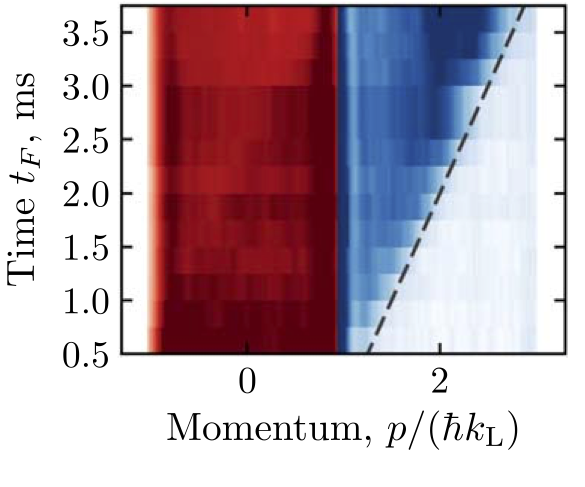Sauter–Schwinger effect with a quantum gas

The creation of particle–antiparticle pairs from vacuum by a large electric field is at the core of quantum electrodynamics. Despite the wide acceptance that this phenomenon occurs naturally when electric field strengths exceed Ec ≈ 1018 V m−1, it has yet to be experimentally observed due to the limitations imposed by producing electric fields at this scale. The high degree of experimental control present in ultracold atomic systems allow experimentalists to create laboratory analogs to high-field phenomena. Here we emulated massive relativistic particles subject to large electric field strengths, thereby quantum-simulated particle–antiparticle pair creation, and experimentally explored particle creation from ‘the Dirac vacuum’. Data collected from our analog system spans the full parameter regime from low applied field (negligible pair creation) below the Sauter–Schwinger limit, to high field (maximum rate of pair creation) far in excess of the Sauter–Schwinger limit. In our experiment, we perform direct measurements on an analog atomic system and show that this high-field phenomenon is well-characterized by Landau–Zener tunneling, well known in the atomic physics context, and we find full quantitative agreement with theory with no adjustable parameters.
Sauter-Schwinger effect with a quantum gas; A. M. Piñeiro, D. Genkina, M. Lu and I. B. Spielman; New Journal of Physics (2019). doi:10.1088/1367-2630/ab3840
